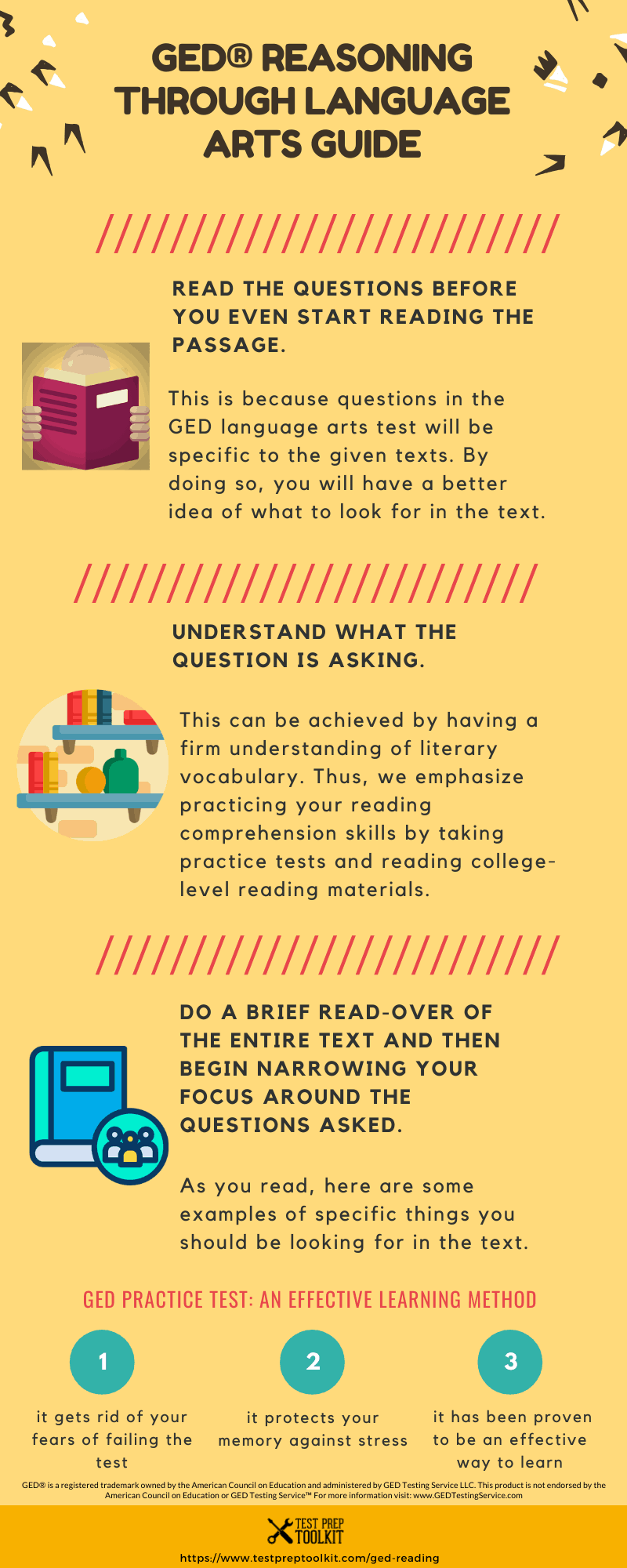GED® Reading & Writing Practice Test ( 25 Questions )
GED® Reading & Writing Practice ( Tons Questions )
GED® Reading and Writing Lessons ( 10 Lessons )
Check out our other Free GED© Practice Tests
How to Prepare for the GED Language Arts Test
Busy and don’t have time to prepare for the GED language arts test? Test Prep Toolkit makes it easy for you to review the essential English grammar and usage skills for the test. We also make it easy for you to practice your reading comprehension skills, especially when you don’t have time to read. Our GED practice tests for language arts will help you polish your English GED-reading and writing skills as fast as possible.
Think you don’t need to review for GED language arts test because the subject is easy? Big mistake. Don’t skip language arts when reviewing for the exam. You may have always found the subject easy. However, if you haven’t studied the subject for years, you may have already forgotten some of the important English grammar and usage rules. You may also need to read more to improve your comprehension.
Check our Free GED Math Practice Test
What’s on the GED® Reasoning through Language Arts Test?
GED® Study Guide is the place to study for the GED® Reasoning Through Language Arts section.
What Does the GED Language Arts Test Cover?
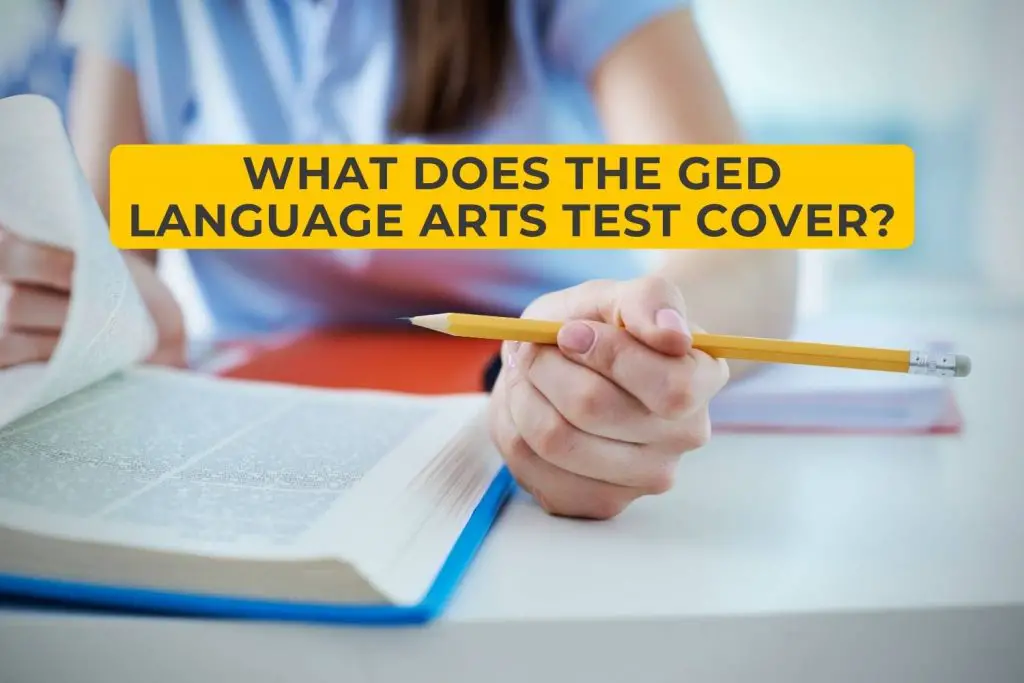
1. Read closely
2. Write clearly
3. Edit and understand the use of standard written English in context.
Poetry and poems aren’t included in the test.
Section 1 and 3 test all content. You will be given 35 minutes to answer the first section and 60 minutes to complete the third section. Another key point to remember is the length of texts on each test question. For reading comprehension, the text is usually is 450-900 words.
The second section is the Extended Response portion or the essay part of the test for. You will have 45 minutes to write the essay. You will be asked to read two short passages with opposing views on a topic. After reading these passages, you will be asked to choose which argument is better supported.
Our GED®Science Practice test will help you pass faster Check HERE
How Will My Essay Be Graded?
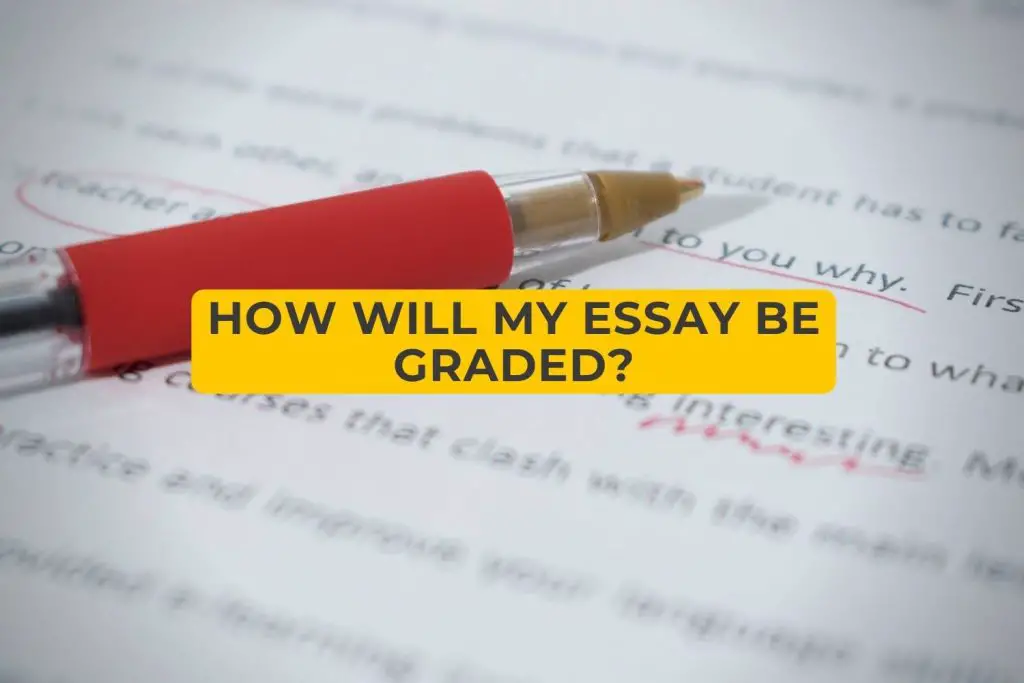
1. How you analyze arguments and use evidence
2. How you develop ideas and structure
3. How clear are you in expressing your ideas to check your command of Standard English
No one knows the exact texts and questions that will appear on the test. Also, you can’t determine what topic you will be asked to write about. For this reason, studying for the GED language arts is a MUST if you want to pass the test.
We know it is easy to get overwhelmed with so many rules and materials to read when studying, so we’ve made that part easy for you by creating short practice tests to sharpen your comprehension as well as reasoning skills. Our GED language arts practice tests only have 25 that you can answer at your own pace.
Visit our website: GED® Science Study Guide
Tips for Success on the GED Language Arts Test for Reading Comprehension

This is because questions in the GED language arts test will be specific to the given texts. By doing so, you will have a better idea of what to look for in the text. This will also allow you to narrow your focus, so you do not become overwhelmed by information.
2- Understand WHAT the question is asking.
This can be achieved by having a firm understanding of literary vocabulary. Thus, we emphasize practicing your reading comprehension skills by taking practice tests and reading college-level reading materials.
3. Do a brief read-over of the entire text and then begin narrowing your focus around the questions asked. As you read, here are some examples of specific things you should be looking for in the text.
- Author Intent: In pieces of literature, the author is most often attempting to make an argument. Their intent, or purpose, or reason for writing the text can be found by looking for a thesis and gathering many ideas. An easy way to think of this is to ask yourself: what is the author trying to say to me, the reader?
- Main Idea: The main idea of a text will be found early on in the text. Look at the title for help. Also, look for repeated ideas and words throughout the text. Ask yourself: what is the text MOSTLY about?
- Supporting Details These are found throughout the text. Typically, they will be found in paragraphs that follow the introductory paragraph. These details will directly support the main idea. These details answer the “why” of the text. Why is the character like this? Why is this conflict occurring? Etc.
- Implicit Language: This is the implied meaning behind a figure of speech or phrase. Implicit language is important because it forces the reader to look beyond what is written.
- Explicit Language: This is what is written exactly in the written in the text. It is written just so and its purpose for appearing in the text is intentional.
- Allusion: It is an indirect reference to a historical event or person, literary character or popular event. Allusions are important because they can portray a complex idea, theme or trait in one image. An allusion can be simply mentioned, or it can be carried out during the entire text.
- Connotation: This is the implied feeling or association that accompanies a certain word. This is NOT the definition of a word, but rather how or what emotions the word provokes.
- Denotation: the exact definition, meaning of a word.
Important Words to Remember
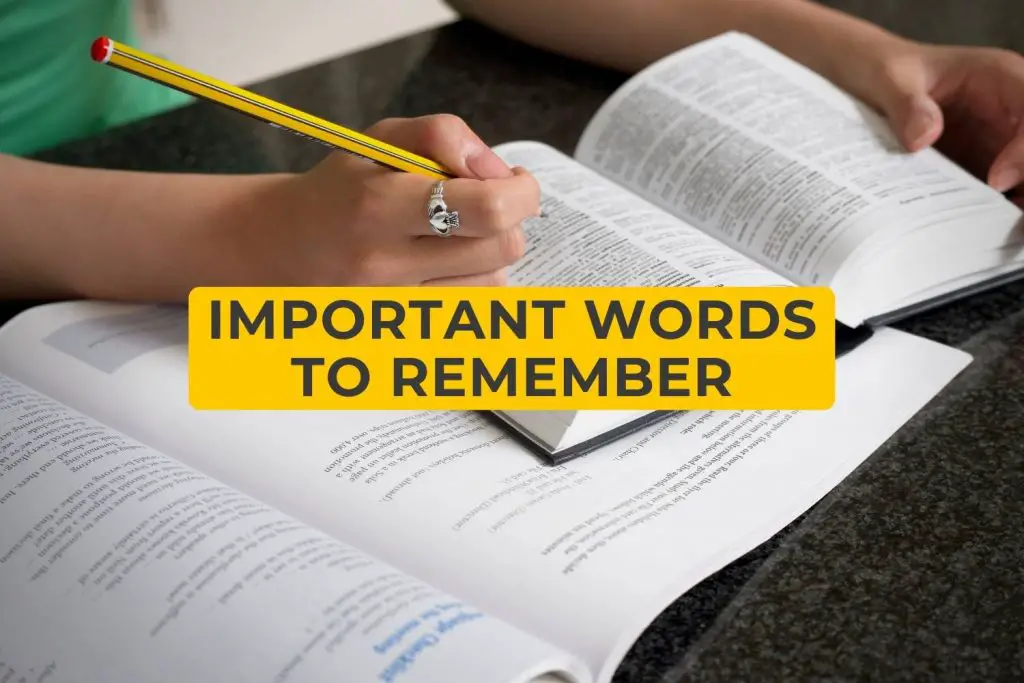
- Inferences: a reasoning or conclusion you can come to based on the details of the text.
Example. “What inferences can you make about the character through her actions?”
i. This question is asking you to make a decision about the character’s personality based on her actions. - Hypothesis: a prediction, or guess about what will happen.
Example. “After reading the story what hypothesis can you make about the fate of the character?”
i. This question is asking you to guess what will happen next to the character. - Generalizations: broad ideas or assumptions that can be made about the characters, environment, and/or happenings in the text.
Example. “Which of the following is a generalization you can make about the community in the story?”
i. This question is asking you to make an assumption about the community based on the details the author has provided. - Figurative language: Words that are not literally used. An author might do this to create an imagine for the reader that the actual meaning cannot create.
Example. “Which of the following is an example of figurative language from the text?”
i. This question is asking you to look for an example of figurative language. You should look at the text and decide which example creates a meaning different than it’s actual definition.
- Metaphor: a comparison between two unlike objects.
- “Life is a journey. Enjoy the Ride.” Nissan
- “Before I met my husband, I’d never fallen in love. I’d stepped in it a few times.” Rita Rudner
- “Life is a zoo.”
- Simile: a comparison between two unlike objects using the word “like” or “as”.
- “blind as a bat”
- “brave as a lion”
- “like a rock”
- “he ran like the wind.”
- Personification: giving an object human or animal-like characteristics, in order to make them appear alive and with feeling.
- The stars danced playfully in the moonlit sky.
- The run down house appeared depressed.
- The flowers waltzed in the gentle breeze.
- Depiction
- A. The author’s depiction of the main character can be seen in which of the following statements?
- i. This question is asking you to read statements and decide which one best describes the author’s opinion, portrayal and/or description of the character.
This question is asking you to read statements and decide which one best describes the author’s opinion, portrayal and/or description of the character.
Complete GED Language Arts Guide Checklist
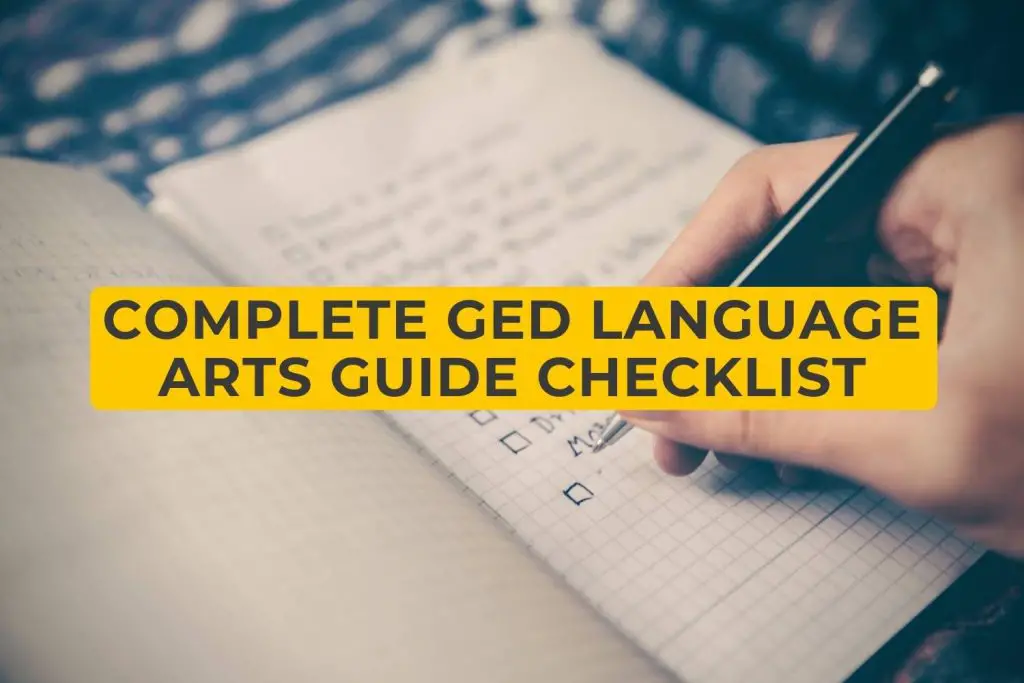
CENTRAL IDEAS AND THEMES OF TEXTS. Analyze their development. Summarize key details and supporting ideas.
(Ask yourself…)
1. Can I COMPREHEND specific details and main ideas in the text?
2. Can I SUMMARIZE details and ideas in the text?
3. Can I make INFERENCES (at a sentence level) of the details presented in the text?
4. Can I make INFERENCES about the main idea of text (at a paragraph or whole text level)?
5. Can I DECIDE which details support the main idea?
6. Can I IDENTIFY theme? Can I identify which details support theme?
7. Can I MAKE generalizations and hypothesize based on the details of the text?
8. Can I MAKE conclusions that require the use of multiple main ideas of the whole text?
CHARACTERS, EVENTS, and IDEA DEVELOPMENT. How do these factors interact over the course of the text?
Ask yourself:
1. Can I make an order from the sequence of events?
2. Can I make INFERENCES about characters, events, setting, and ideas?
3. Can I ANALYZE relationships and events throughout the text? How are these aspects developed, distinguished, and connected throughout the text? How do they add to the overall theme and main ideas? How does the setting help construct the structure of the text?
4. Can I make INFERENCES about the relationships between the ideas of the text?
5. Can I ANALYZE the purpose and roles that the details play throughout the texts?
INTERPRET LANGUAGE of the TEXT. Examine how words and phrases appear. Consider connotative and figurative language. Analyze word choice, meaning, and tone.
Ask yourself:
1. Can I determine the meaning of words and phrases used in the text? Can I determine connotative and figurative language?
2. Can I analyze how tone is affected when certain words are replaced with one another?
3. Can I analyze the meaning of words and language in the text, specifically understanding the author’s intent to provide information OR construct their argument?
STRUCTURE of TEXTS. How specific sentences and paragraphs relate to one another and the whole text. Ask yourself:
1. Can I ANALYZE how a word, sentence or paragraph shapes and relates to the structure of the text? Can I ANALYZE also how a word sentence or paragraph contributes to the development of ideas?
2. Can I ANALYZE the structural relationship between two texts?
3. Can I ANALYZE transitional language and important words? Can I determine how the transitional language and signal words refine language, emphasize ideas and encourage the author’s purpose?emphasize key ideas, and support purpose?
AUTHOR’S PURPOSE/POINT OF VIEW. How are these elements effective in conveying content and style. Ask yourself:
1. Can I DETERMINE the author’s point of view?
2.Can I determine how the author uses point of view to distinguish their opinions and position from that of others in the text? How can I distinguish how the author acknowledges and responds to varying evidence and viewpoints?
3. Can I INFER implicit and explicit purposes of the text?
4. Can I ANALYZE how rhetorical techniques are used to enhance the point of view and purpose?
ARGUMENTS and CLAIMS in the TEXT. Effective reasoning and sufficient evidence. Ask yourself:
1. Can I trace specific steps of an argument? Can I determine how the author uses arguments to build their claims on one another?
2. Can I IDENTIFY specific pieces of evidence?
3. Can I EVALUATE how specific evidence is relevant and sufficient?
4. Can I DISTINGUISH supported claims from unsupported claims?
5. Can I DETERMINE whether the presented meaning is valid?
6. Can I IDENTIFY underlying meanings and assumptions in an argument? Can I evaluate logical support and evidence provided throughout the text?
ANALYZING THEMES and/or TOPICS in TWO or MORE TEXTS.
Ask yourself:
1. Can I DRAW CONCLUSIONS between two texts that share similar themes and topics?
2. Can I COMPARE two texts that have similar ideas and themes? Can I apply my knowledge of perspective, tone, structure, and purpose of these two texts?
3. Can I COMPARE two argumentative texts with one another? Can I ANALYZE the evidence in each and draw conclusions?
4. Can I look at visual information and DETERMINE whether it supports or discredits information and author intent of another piece of text?
5. Can I COMPARE two texts from different genres or formats? Can I find similarities or differences in purpose, overall meaning and audience intent?
6. Can I COMPARE two texts with differing genres, but with similar themes, to synthesize details, apply information and draw conclusions?
We have Practice Test that you can use: GED® Reasoning Through Language Arts Practice Tests
Quick Tips for the Extended Response Section
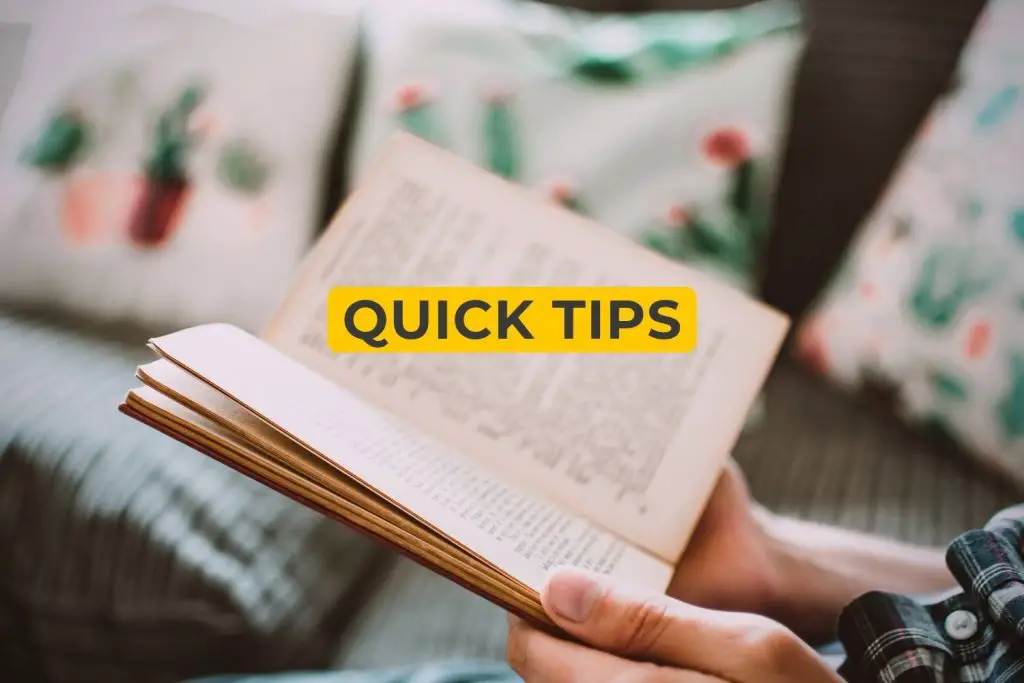
1. Read the two passages carefully.
2. Choose the argument with the most support.
3. Gather evidence to support your argument.
5. Finish off with a concluding statement that highlights the argument you have chosen.
Additionally, remember to keep in mind the following tips for writing:
1. No text spelling, such as “u” or “ur.” Spell words correctly.
2. Take note of words that sound alike. Some words may confuse you, so keep in mind the difference between words that sound alike, such as “pail” and “pale” or “tail” and “tale.”
3. Proofread your work. Check for spelling, grammar, and punctuation errors.
- Free GED Social Studies Practice Test
- Free Online GED Classes: Step-by-Step Prep Program for Adults
- GED Math Video Lessons
- GED Science Classes Online
- GED Social Studies Classes Online
- GED Study Guide
- GED 101: 2020 GED Practice Tests, GED Classes for GED Exam – 1 Stop GED Programs Guide
- GED Math
- GED® Social Studies Prep Guide
